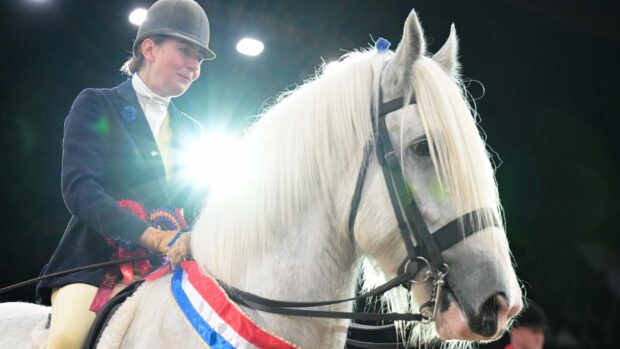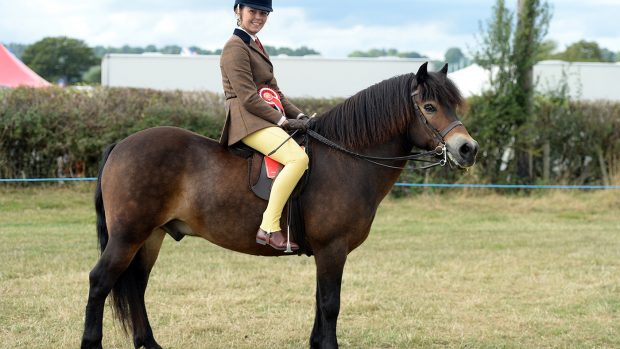The critically endangered population of Britain’s oldest draught breed has received a boost with the birth of a prized filly.
The Suffolk, who has been named Dawley Flossie of Foy, was born at Thorpeley Stud and is by Bruce Langley-McKim’s stallion Craikhow Hall Jensen out of Dawley Freya Of Foy.
In order for the breed to survive, around 40 foals need to be born each year, but in 2018 just 26 were registered.
This year, numbers are already up with 34 foals on the ground, evenly split between 17 colts and 17 fillies.
“We’re desperately short of fillies, so the more born the better,” said Bruce, who was donated the mare and her daughter Dawley Duchess Of Foy to use for breeding by Mr and Mrs Parker from Hereford.
“Freya foaled out in the field as she’s a big mare, with me up watching all night,” he said. “The foal was already sold 10 months ago and I already have two buyers lined up for foals next year.”
Bruce said his stallion had become “a bit of an international playboy” since hitting H&H and the national press when he took him out hunting last year — an unusual occupation for such a heavy draught breed.
The impulsive purchase of the imposing 10-year-old has propelled Bruce, who already had an interest in native draughts, into the world of Suffolk breeding.
“When I spotted him, what I saw was a big man’s hunter,” he said. “If you were breeding with a bog standard Suffolk, you wouldn’t know if they can jump, but he can do the job, which makes him attractive.”
Continued below…

Desperate appeal to save British breeds from extinction
‘We should not let down our grandchildren’s children and allow the breeds to become extinct. We are responsible’

Subscribe to Horse & Hound magazine today – and enjoy unlimited website access all year round

‘More than just a plough horse’: Suffolk stallion to compete in one-day-event
‘I don’t want them to be any smaller, or lighter-framed – I don’t want to lose what a Suffolk horse
Bruce now plans to put him forward for Sport Horse Breeding of Great Britain grading next year, which would make him the first Suffolk on their books, and believes he will be useful in producing true heavyweights for the show ring.
“People have been coming to use him left, right and centre — as well as Suffolk breeders we’ve put him to two or three thoroughbreds, an Irish hunter and I have a warmblood by Indoctro in foal to him. He’s useful for cross-breeding if you want a big horse that can operate.
“He lived on a farm before I bought him not doing very much and now he’s become the Susan Boyle of the equestrian world!” he added.
In 2018 the Rare Breed Survival Trust placed Suffolks third on the list for critically endangered horses, with projections suggesting the breed could become extinct by 2027.
The increase in mechanisation after the second World War saw numbers dwindle, and the population currently stands at around 300 to 400 horses in the UK.
The Suffolk Horse Society currently offer incentives to breeders in a bid to boost numbers to sustainable levels.
For all the latest news analysis, competition reports, interviews, features and much more, don’t miss Horse & Hound magazine, on sale every Thursday.




